Well cleaning pump: selection criteria and operating rules
Previously, work on cleaning the well bottom was carried out exclusively by hand using buckets and ropes. Now pumping equipment is helping to cope with this problem. Using technology, the cleaning procedure is much simpler and much faster. Do you agree?
We will tell you how to choose the perfect pump for cleaning wells, capable of pumping water with the inclusion of sand and fine gravel. Here you will find out whether a borehole or drainage model will better save the mine from silt and mineral deposits. You can choose the most efficient equipment.
In our article, we have described in detail the technologies for cleaning a well shaft with different types of pumps. For a visual perception of information, diagrams, photo selections, video instructions are attached to it.
The content of the article:
Drainage pumps and their capabilities
In the process of intensive operation of the well, siltation of its bottom occurs, which leads to clouding of the water, a decrease in its flow, and the appearance of an unpleasant odor. In order for the water source to always remain in a suitable condition for use, it is necessary to periodically clean its bottom from the washed sand, clay and other solid impurities.
It is recommended to clean the wells once every three years. With the exception of structures excavated on fine sand, which need annual cleaning. Private waterworks are cleaned with drainage pumps - devices endowed with great functionality.
Drainage pumps are able to cope with pumping clean and turbid water from wells, flooded pits, pools, cellars, cellars. The pump is also suitable for quickly eliminating the unpleasant consequences of public accidents.
In addition, the drainer can be used to ensure constant circulation of water in garden fountains, ponds and other artificial reservoirs.
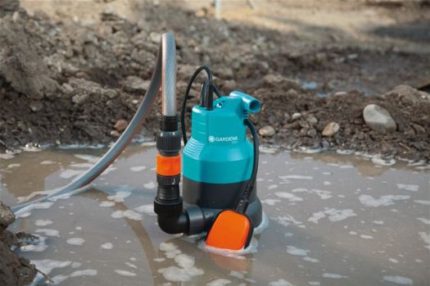
In order to select the device that is optimal in terms of technical parameters, you need to clearly understand what kind of water, dirty or clean, the pumping equipment will have to work with. Under clean water, it is customary to mean a liquid having inclusions not exceeding 5 mm in size.
Drainage pumps designed for pumping clean and dirty water are distinguished by:
- diameter of the outlet pipe;
- diameter of the suction port;
- material taken for the manufacture of parts of the device.
In dirty water there can be solid particles up to 35 mm in section. Next, you need to determine the total volume of pumped water.
It is also important to find out the depth with which it is supposed to organize water intake, and also take into account the composition of the bottom filter - what size gravel was used for its construction.

Pump selection by capacity and pressure
In addition to water quality to the most important parameters selection of a drainage pump include its performance and pressure. By productivity we mean the volume of water that a pump is capable of pumping to a specific unit of time.
Typically, the productivity of pumping equipment is measured in l / h or m3 / h, which respectively means liters per hour or cubic meters per hour. This technical parameter shows how quickly the unit can clean the well of contaminated water.
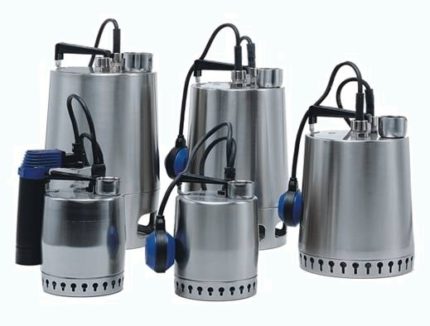
Head is a measure of the height of water rising, measured in atmospheres, bars and meters. This indicator of drainage pumps is usually small, since water is pumped from a shallow depth. Do not forget about the ratio of vertical and horizontal pressure of 1:10.
For example, if you pump water from a well 8 m deep and move it 10 m along a hose lying on the ground to divert it beyond the boundaries of your site, then the pressure at the pump should be at least 9 meters.
It is also necessary to remember that the pumps, depending on the height of the lift, will operate with different levels of performance. Graphs of the dependence of both of these values can be found in the instructions that came with the device.
Types of Submersible Pumps
For pumping water, the owners of suburban land use submersible pumps, which can be vibrational or centrifugal. Models differ in the way they absorb water, so the quality of the latter plays an important role when choosing pumping equipment.
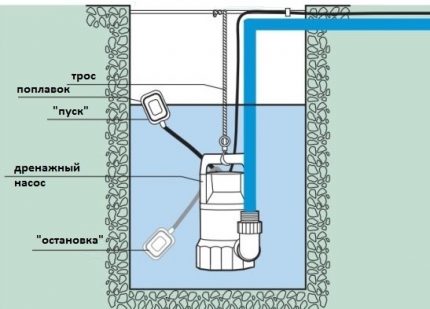
Centrifugal Submersible Pumps
Models in which a wheel with blades is used as a suction device are called centrifugal.This design feature affects the increase in pump performance, and also does not allow abrasive particles in the pumped well water to get into it.
Water chambers and centrifugal wheels, depending on the model, can be made:
- of steel;
- made of high quality polymer.
Also a distinctive feature of submersible drainage machines is the presence in their design of a float or electronic switch. Devices with a float switch are more widespread because they are simpler, cheaper, and most importantly, more reliable. The switch is needed in order to automate the process of pumping water.
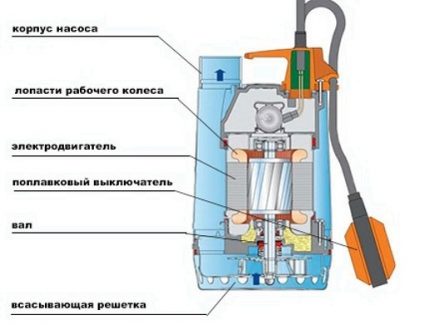
A float is a small airtight container with a contact block inside. With a decrease in water level float mechanism gradually lowers until it reaches acceptable limits. At maximum depth, he turns off the engine, preventing its dry running. Dry operation leads to failure of the pumping device.
The body of the drainage pump must always be immersed in liquid, since water helps to cool the working mechanism. Water also acts as a lubricant for rotating parts.
Installing the drain pump: step-by-step instructions
Before starting work to install the pump, they determine or arrange a flat platform so that it functions in a strictly upright position, then:
- A hose is connected to the discharge pipe, using connecting elements for fastening.
- If the model has a float switch, a check valve is installed on the pressure line.
- A device equipped with a three-phase electric motor is necessarily checked for the correct rotation of the centrifugal wheel.
- They turn on the equipment and immediately turn it off, paying attention to the direction of rotation of the pump shaft: clockwise - everything is connected correctly, if not, they change phases.
- The pump is connected by means of a carabiner to an electric winch cable or to a rope, making sure that the discharge pipe remains directed upwards.
- The unit is slowly lowered to the bottom of a silty well.
- When operating pumping equipment, comply with safety requirements.
If there are signs of a malfunction in the equipment, you must immediately turn off the power and stop pumping.
Vibratory submersible pumps
Vibration-type pumping equipment works by changing the internal pressure causing vibrations of the diaphragm. The difference in pressure appears as a result of the action of a magnetic field generated when an electric current passes through a coil.
Parts driven in alternating motion by a magnetic field lift the water flow up. Vibration pumps are powered by 220V and consume approximately 270 W per hour (the indicator depends on the power of the model).
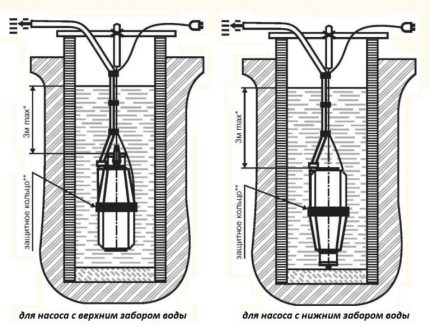
Submersible vibration pumps can be produced with an upper or lower water intake from a well:
- Devices with an upper water intake function without overloads, since they do not heat up during operation due to cooling of the entire system. Also, such pumps do not suck in the sludge deposited at the bottom of the well, and do not contribute to clouding of the water during the intake. Therefore, they are inappropriate to use for cleaning the well.
- Devices with lower water absorption, not equipped with automation and thermal protection system, as devices can overheat even during short-term operation “on dry”. To protect the mechanisms from the suction of sand and silt, a mechanical filter is used. Craftsmen replace the filter with an ordinary iron bucket in which the pump is placed.Lower the bucket with the apparatus into a low debit well and pump water.
Vibration pumps are durable in operation, since there are no rotating elements and bearings in their design, and therefore the parts, without being subjected to friction, do not fail.
When cleaning wells, vibration-type pumping equipment can be used only for pumping turbid water, and sand and mud deposits should be scooped out manually with buckets, home-made scoops, buckets, grabs and other devices.
Selection of a hose for pumping water
Hoses or tubes for pumps should be selected depending on the pressure force, as well as on the diameter of the cross section of the outlet pipe. The main requirement is that the diameter of the hose must match the diameter of the outlet pipe.
Compliance with this requirement will extend the life of the purchased pump many times and will have a beneficial effect on its performance.
As a flexible hose, you can use a fire hose, which is mounted on the outlet pipe with a clamp. At the edge of the well ring, the sleeve is pinched and the pump cannot push the pumped water out. This problem can be eliminated by a plastic corner, to which fire hoses are connected from both sides.
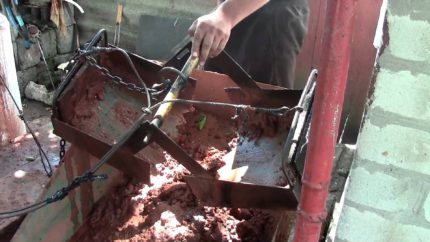
Features of connecting submersible pumps
Before lowering the pump into the well, a number of preparatory measures are carried out, namely:
- determine the depth of the apparatus in the source;
- fasten the hose to the pipe using a plastic clamp;
- thread a kapron cord or a steel cable of small diameter into the special eyes available on the pump casing;
- a special rubber ring is pulled onto the body, which will protect the vibrating pump from mechanical damage if it touches the concrete walls of the well shaft;
- 0.5 meter long elastic rubber is tied to the upper end of the cord so that it dampens vibrations.
The pump with the lower water intake is placed at a distance of 1.0 m from the bottom of the well, and with the upper slightly lower - 0.5 m. The cable to which the pump is attached is fixed to the crossbar mounted on the upper well ring. Having completed the installation of equipment, they connect the pump to electricity.
If the length of the cord is not enough, then it is lengthened with an additional cable, while the connection should be outside the well shaft. During pumping out of water, they monitor its pressure, preventing the motor from running “dry”. After two hours of continuous operation, turn off the pump for 15 minutes to avoid overheating of the motor.
Cleaning a heavily silted well
With strong siltation of a well, the efficiency of using a drainage pump decreases sharply. The equipment is quickly clogged with sand, and therefore can not cope with the tasks assigned to it.
Some summer residents advise using in this case another surface pump, which, under pressure, discharges sand-free water back into the well shaft, thereby contributing to erosion of bottom sediments.
The method is as follows:
- a barrel or other container is installed near the well, the volume of which is 200-300 liters;
- a drainage pump is lowered into the well shaft, which pumps muddy water from the well into the prepared container;
- clean water, settled in the barrel, is sent by the second pump back to the well, and sand from the bottom of the tank is removed;
- a jet of water, launched under pressure, erodes the bottom sand, which, together with water, rises up into the barrel with a drainage pump, and everything is repeated again.
This method of cleaning a well has opponents who consider it economically impractical. According to them, it is more profitable to hire a team of workers who can go down and scoop up silt with buckets, lifting it to the surface. If this is not possible, why not try the option with two pumps.
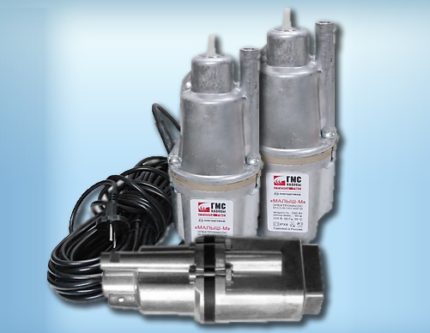
With the help of pumping equipment, a silty well is easily and quickly cleaned. After pumping out the muddy water, the well is filled with crystal clear life-giving moisture and begins to delight its owners with delicious cold water.
After cleaning, the pump can always be used to solve other problems. Inexpensive vibration models are used in flushing wells after drilling. During floods and rising groundwater, flooded basements are quickly freed from gushing water.
Inexpensive vibration pump, e.g. “Fontanel”, you can pump out the pond by cleaning its bottom from silt accumulations. A lean owner will always find a way to increase the efficiency of purchased equipment.
Rules for operating the pump when cleaning the well
Choosing the right model for cleaning the well, carefully read the instructions. Indeed, some drainage pumps were originally designed to lift and pump only clean water that does not contain impurities. The manufacturer warns about this in the description of the technical characteristics of the equipment.
If such devices begin to pump out contaminated water, they will quickly fail. Remember that you need to clean the silted well with a drainage pump that can handle the intake of contaminated liquids, which contain impurities and even small fibers.
If stable deposits appear on the walls and bottom of the well shaft, before using the pump, clean the well manuallyto get rid of dirt faster and prevent clogging of the pump parts.
Browse Popular Models
In the market of pumping equipment, models of Russian and foreign manufacturers are presented. Each brand has its own fans.
Budget pumps of Russian companies “Whirlwind” and “Kid”Attracted by affordable price and good performance. German pumps brand Wilo Drain, Grundfos, Karcher, like the Japanese Makita, do not need advertising.
These devices have high performance and reliability throughout the life of the device. When buying pumping equipment, be sure to check the availability of all components specified in the attached instructions.
Pay attention to the application restrictions indicated by the manufacturer.Remember that the technical characteristics of different models of pumps can vary significantly, which affects the way they are used.
Conclusions and useful video on the topic
The video gives recommendations on pumping water from a well with a submersible drainage pump and subsequent excavation of sand with a homemade scoop.
Practical advice: when cleaning wells, the float is tied to a rope or to the cable on which the pump is mounted, in order to pump water from the maximum possible depth. In this case, of course, the manufacturer’s recommendations for the operation of the equipment are violated, but it is possible to free the well from the water almost to the bottom.
At the end of this video, you will see how to use two submersible pumps with an upper and lower water intake to clean the well.
After watching this video, you will learn how to clean a well with a vibrating pump, usually used only for raising clean water.
Drainage pumps are indispensable helpers in the garden and suburban area. These inexpensive devices are characterized by ease of use, ease of installation and the effectiveness of the result of their use.
Want to talk about how to clean a well with a pump in a suburban area? Having questions while reading this article? Please write in the block below.

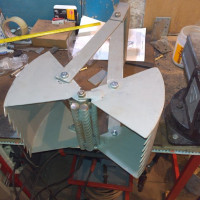 A review of the best tools for cleaning wells and how to use them
A review of the best tools for cleaning wells and how to use them 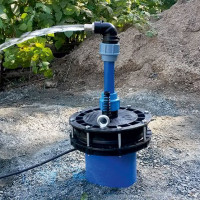 Maintenance of a well for water: rules for the competent operation of a mine
Maintenance of a well for water: rules for the competent operation of a mine 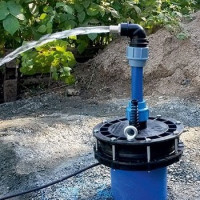 How to swing a well: methods for pumping after drilling and during operation
How to swing a well: methods for pumping after drilling and during operation 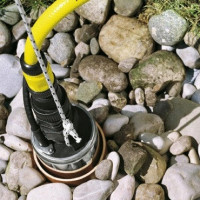 How to get a pump out of a well if it is stuck: first aid from professionals
How to get a pump out of a well if it is stuck: first aid from professionals 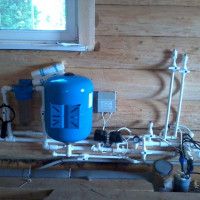 Rules for arranging an autonomous water supply system for a private house from a well
Rules for arranging an autonomous water supply system for a private house from a well  The head for the well: device, types of structures, installation and installation rules
The head for the well: device, types of structures, installation and installation rules  How much does it cost to connect gas to a private house: the price of organizing gas supply
How much does it cost to connect gas to a private house: the price of organizing gas supply  The best washing machines with dryer: model rating and customer tips
The best washing machines with dryer: model rating and customer tips  What is the color temperature of light and the nuances of choosing the temperature of the lamps to suit your needs
What is the color temperature of light and the nuances of choosing the temperature of the lamps to suit your needs  Replacement of a geyser in an apartment: replacement paperwork + basic norms and requirements
Replacement of a geyser in an apartment: replacement paperwork + basic norms and requirements
From the husband’s parents there was already a house for grandchildren. The house and the suburban area with a well have not been used for more than 10 years. And the well was not cleaned even longer. Now children come there as if they were in the country, but the problem is in the well. It is almost half full of sand. No silt. My son-in-law was never involved in this. I can only help with memories, when my husband pumped water out of a pump and delivered buckets of sand to a helper on a rope from a well. I have an amateur question: what kind of pump would you recommend at a budget price for wells in which water contains some sand? We will definitely use the recommendations, it’s interesting even to me.
Recently purchased a farm in the Vladimir region. The area of the land allotment is 2.4 ha. There is where to turn around. However, the land was empty for a long time. The irrigation system used by the old owners was dilapidated, and many silty deposits accumulated in the wells - an unpleasant odor appeared. Need help: what to do in such a situation? To reconstruct the old water supply system, or still make a new one? Will pumping equipment help in this case?
Hello Michael. As for the silt deposits in the well, if this is the only problem, then you can easily get rid of them and continue to use this water.
To eliminate sludge from the bottom of the well, I recommend using a grab. You can take it from someone for a while or do it yourself. I advise the second option, such a device is useful in the household. I enclose a photo and a detailed diagram.
Regarding the old irrigation system, in this case everything depends on the degree of damage clogging. Dry cleaning cannot be used here. Tapping and cable cleaning is also not an option. All that remains is hydro-jet cleaning. Here you already have to figure out what will cost cheaper: such a cleaning or replacement of the irrigation system.